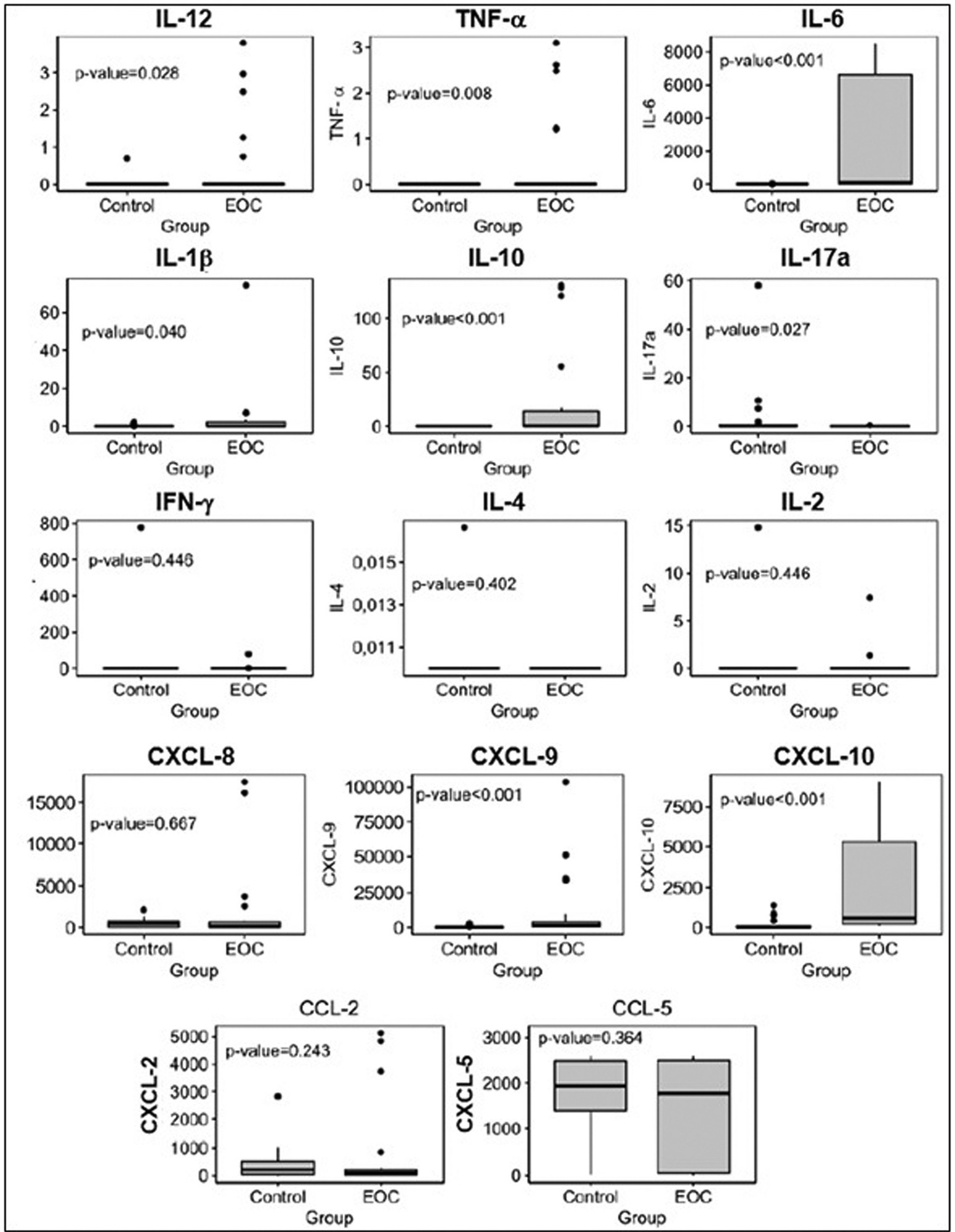Revista Brasileira de Ginecologia e Obstetrícia. 2023;45(12):780-789

To compare the patterns of systemic inflammatory response in women with epithelial ovarian cancer (EOC) or no evidence of malignant disease, as well as to evaluate the profile of systemic inflammatory responses in type-1 and type-2 tumors. This is a non-invasive and indirect way to assess both tumor activity and the role of the inflammatory pattern during pro- and antitumor responses.
We performed a prospective evaluation of 56 patients: 30 women without evidence of malignant disease and 26 women with EOC. The plasma quantification of cytokines, chemokines, and microparticles (MPs) was performed using flow cytometry.
Plasma levels of proinflammatory cytokines interleukin-12 (IL12), interleukin-6 (IL-6), tumor necrosis factor alpha (TNF-α) interleukin-1 beta (IL-1β), and interleukin-10 (IL-10), and C-X-C motif chemokine ligand 9 (CXCL-9) and C-X-C motif chemokine ligand 10 (CXCL-10) were significantly higher in patients with EOC than in those in the control group. Plasma levels of cytokine interleukin-17A (IL-17A) and MPs derived from endothelial cells were lower in patients with EOC than in the control group. The frequency of leukocytes and MPs derived from endothelial cells was higher in type-2 tumors than in those without malignancy. We observed an expressive number of inflammatory/regulatory cytokines and chemokines in the cases of EOC, as well as negative and positive correlations involving them, which leads to a higher complexity of these networks.
The present study showed that, through the development of networks consisting of cytokines, chemokines, and MPs, there is a greater systemic inflammatory response in patients with EOC and a more complex correlation of these biomarkers in type-2 tumors.
Search
Search in:


Comments